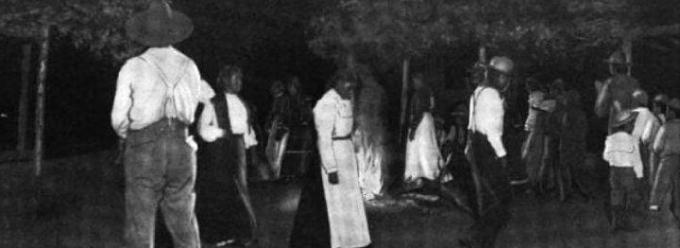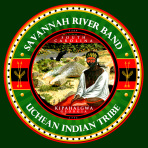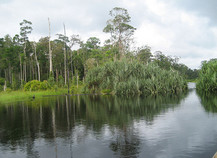Maroon camps on the Savannah River Swamps
Back Swamp Maroon Camp During colonial Slavery Runnaway African and Indian Capatives became known as maroons. Back Swamp was a significant group reported from 1786-1787 on the Savannah River islands, which raided on either side of the river, right down through modern Allendale Barnwell Hampton and Jasper Counties,about on the Savannah River in 1765, 1771 and 1786-1787 Raiding plantations freeing both Indian and African slaves. The number of maroon captured or killed was always very small, and the rest seem to just melt away into the swamp."
There is an excellent book called Maroon Societies - Rebel slave communities in the Americas, by prof. Richard Price. Part Three deals with the Americas. Part Ten deals with Savannah River Boarder of South Carolina and Georgia.
In June 1711, the inhabitants of the colony of South Carolina were kept "in great fear and terror" by the activities of "several Negroes [who] keep out, armed, and robbing and plundering houses and plantations" (Holland 1823:63; Wallace 1934, I:372). These men were led by a slave named Sebastian, who was finally tracked down and killed by an Indian hunter. Lieutenant Governor Gooch of Virginia wrote to the Lords of Trade, June 29, 1729, "of some runaway Negroes beginning a settlement in the Mountains & of their being reclaimed by their Master" (Virginia manuscripts from British Record Office, Sainsbury, IX:462, Virginia State Library). He assured the Lords that the militia was being trained "prevent this for the future".
In September 1733, the governor of South Carolina offered a reward of 20 pounds alive or 10 pounds dead for "Several Run away Negroes who are near the Congerees, & have robbed several of the Inhabitants thereabouts." The Notchee Indians offered, in April 1744, to aid teh government of South Carolina in maintaining the subordination of its slave population. Three nomths later, on July 5, 1744, Governor James Glen applied "for the assistance of some Notchee Indians in order to apprehend some runaway Negroes, who had shelted themselves in the Woods, and being armed, had committed disorders.." (Council Journal [MS.] V:487, 494; XI:187, 383, South Carolina Historical Commission, Columbia, S.C.).
The number of runaways in South Carolina in 1765 was exceedingly large. This led to fears of a general rebellion (Wallace 1934, I:373). At least one considerable camp of maroons was destroyed that year by military force. A letter from Charleston of August 15, 1768, told of a battle with a body of maroons, "a numerous collection of outcast mulattoes, mustees, and free negroes" (Boston Chronicle, October 3-10, 1768).
Governor James Habersham of Georgia learned in December 1771 "that a great number of fugitive Negroes had committed many Robberies and insults between his town [Savannah] and Ebenezer and that their Numbers (which) were now Considerable might be expected to increase daily." (Candler 1907, XII:146-47, 325-26).
Indian hunters and militia men were employed to blot out this menace. Yet the same danger was present in Georgia in the summer of 1772. Depredations, piracy, and arson were frequent, and again the militia saw service. A letter from Edmund Randolph to James Madison of August 30, 1782, discloses somewhat similar trouble in Virginia (Conway 1888:50-51). At this time it appears that "a notorious robber," a white man, had gathered together a grop of about fifty men, Negro and white, and was terrorizing the community.
The British had combated the revolutionist's siege of Savannah with the aid of a numerous body of Negro slaves, who served under the inspiration of a promised freedom. The defeat of the British crushed the hopes of these Negroes. They fled, with their arms, called themselves soldiers of the King of England, and carried on a guerilla warfare for years along the Savannah River. Militia from Georgia, together with Indian allies, successfully attacked the Negro settlement in May 1786, with resulting heavy casualties (Stephens 1859, II:376-78; Woodson 1928:123; Historical Manuscripts Commission, Report on American Manuscripts, London 1904, II:544). Governor Thomas Pinckney of South Carolina referred in his legislative message of 1787 to the serious depredations of a group of armed fugitive slaves in the southern part of the state.






